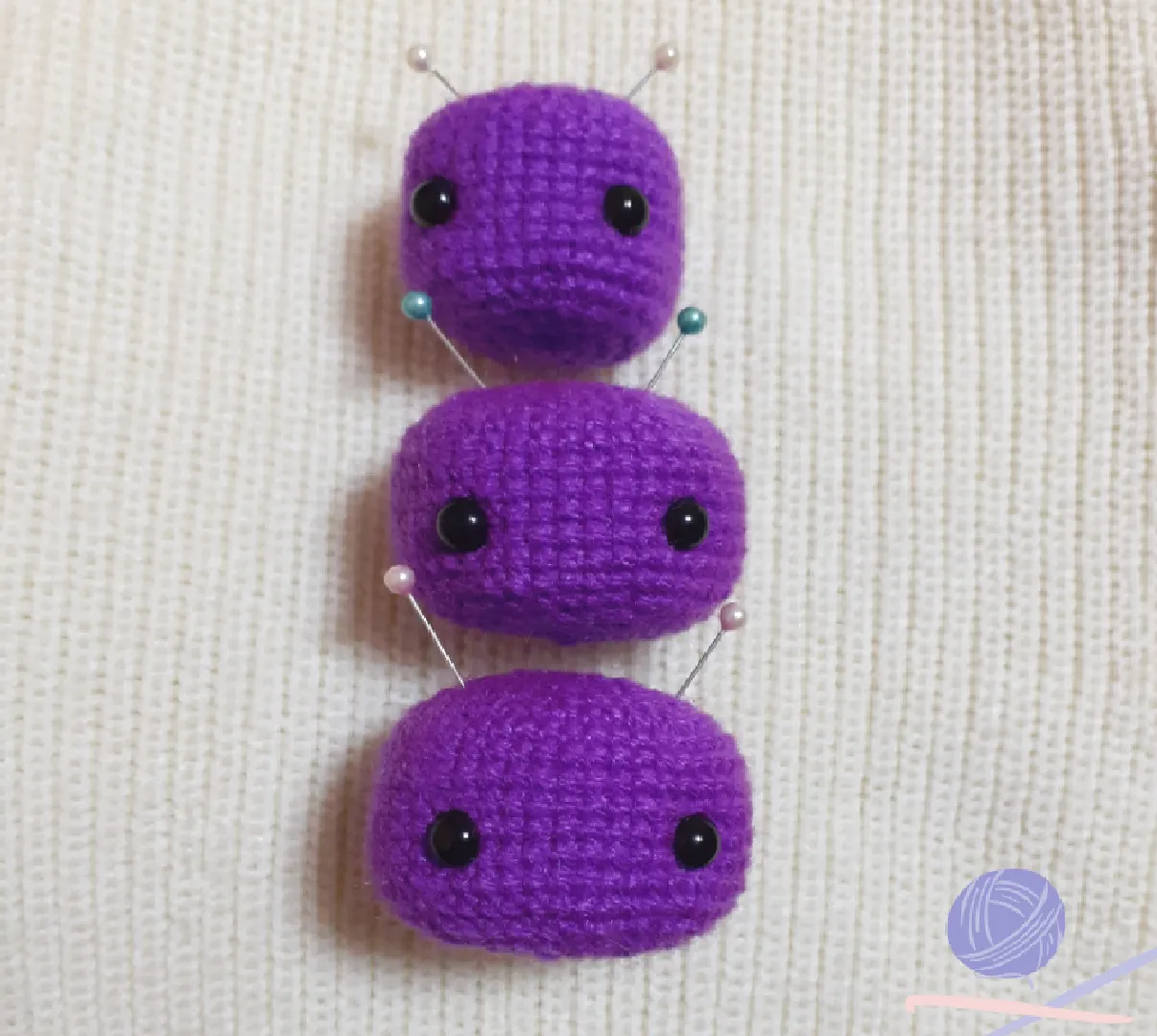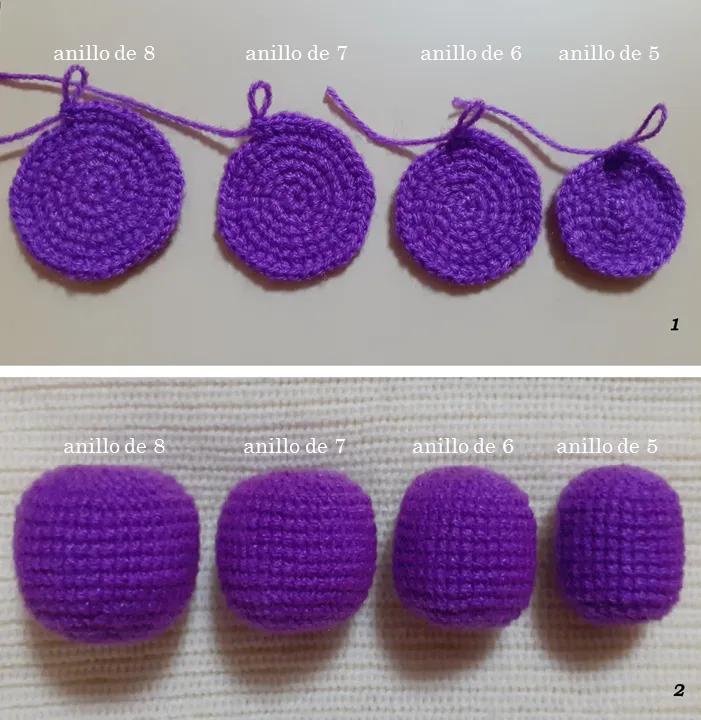¡Hola, espero la estén pasando bien!
Hi, I hope you are having a good time!
Un amigurumi está compuesto mayormente de figuras geométricas, anillos mágicos y puntos bajos. Ahora bien, si queremos diseñar nuestros propios amigurumis debemos tener en cuenta las composiciones de los anillos mágicos, es decir si queremos formar figuras geométricas pequeñas se debe iniciar con anillos mágicos de 3 ó 4 puntos, de lo contrario anillos mágicos con 6 puntos en adelante.
An amigurumi is mostly composed of geometric figures, magic rings and low stitches. Now, if we want to design our own amigurumis we must take into account the compositions of the magic rings, that is to say, if we want to form small geometric figures we should start with magic rings of 3 or 4 stitches, otherwise magic rings with 6 stitches and upwards.

Muchas veces cuando se quiere diseñar la cabeza de un amigurumi no sabemos cuántos puntos colocar en el interior del anillo mágico y cuántas rondas rectas se tejerán. Lo común es iniciar con un anillo mágico de 6 puntos, pero ¿qué pasa si iniciamos con un número distinto al 6?.
Many times when we want to design the head of an amigurumi we don't know how many stitches to place inside the magic ring and how many straight rounds to knit. It is common to start with a magic ring of 6 stitches, but what happens if we start with a number other than 6?
Materiales /materials:
- Lana acrílica delgada / thin acrylic wool
- crochet 2mm
- tijera / scissor
- napa siliconada / silicone coating
- aguja lanera / wool needle
- ojos de seguridad / security eyes

Para esto, realizó un pequeño experimento. Se tejió cuatro anillos mágicos de 5, 6, 7 y 8 puntos (figura 1). En todas las muestras se tejió hasta la fila 6, es decir 4pt + 1aum. Dieron un total de 30, 36, 42 y 48 pt. Se mantuvo recto 8 filas (figura 2). Como solo varió el área de la base se puede observar que las esferas tejidas con anillos de 6 y 7 mantienen su forma a comparación de las esferas extremas.
For this, he conducted a small experiment. Four magic rings of 5, 6, 7 and 8 stitches were knitted (figure 1). In all the samples he knitted up to row 6, i.e. 4sc + 1aum. They gave a total of 30, 36, 42 and 48 sc. It was kept straight 8 rows (figure 2). As only the area of the base varied, it can be seen that the spheres knitted with 6 and 7 rings keep their shape compared to the extreme spheres.

Una vez que se analizó la posición de los ojos (figura 3), se colocaron los ojos para ver cómo quedaban (figura 4). Las cabezas 7 y 8 quedaron achatadas a comparación de la 6.
Once the position of the eyes was analysed (figure 3), the eyes were positioned to see how they looked (figure 4). Heads 7 and 8 were flattened compared to head 6.
La explicación matemática sería esta: / The mathematical explanation would be this:

Normal:
Para calcular el número de filas rectas de la cabeza, será el número de filas tejidas más 2 ó 3 unidades.
To calculate the number of straight rows of the head, it will be the number of knitted rows plus 2 or 3 units.
Nº filas rectas = Nº filas tejidas + 2 ó 3
Ejemplo: 6 + 2 = 8
*Es por eso que se tejió 8 filas constante.
Ahora:
Debido a que las cabezas extremas quedaron deformes se ideó una nueva fórmula. Para esto, se tomó como base el anillo mágico de 6pt.
Because the extreme heads were deformed, a new formula was devised. For this, the 6pt magic ring was used as a basis.

Si tomamos esta nueva fórmula y seguimos manteniendo el número de filas tejidas, entonces el número de filas rectas para las cabezas serían:
If we take this new formula and keep the number of knitted rows, then the number of straight rows for the heads would be:
anillo de 5: 6 + 2 - 1 = 7
anillo de 6: 6 + 2 + 0 = 8
anillo de 7: 6 + 2 + 1 = 9
anillo de 8: 6 + 2 + 2 = 10
Espero les sirva este dato para futuros proyectos. Me olvidaba, esto es solo para la cabeza humana porque para las cabezas de animales se cambia la forma y se juega más con los aumentos y disminuciones en lugar de tejerlo recto.
I hope this will be useful for future projects. I forgot, this is only for the human head because for the animal heads you change the shape and play more with the increases and decreases instead of knitting it straight.
¡Y eso es todo!,
¡…Hasta la próxima!
See you next time!
